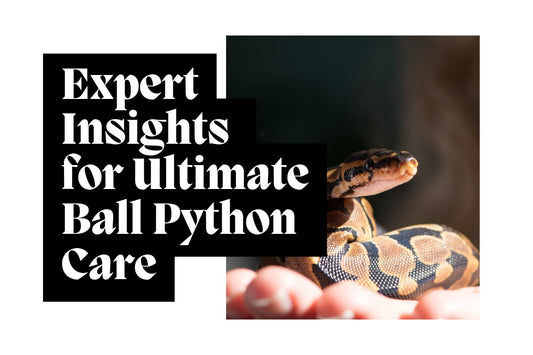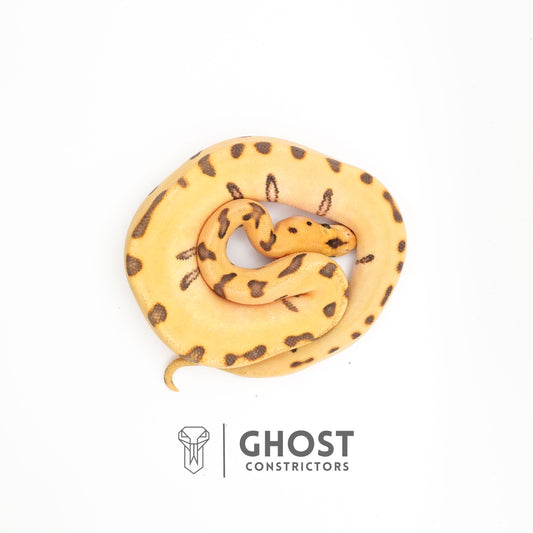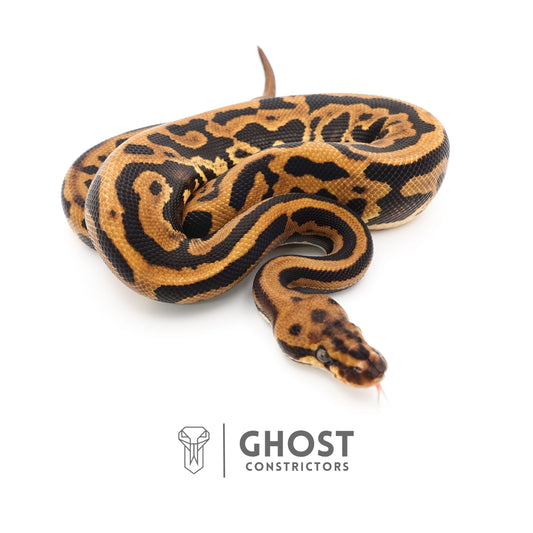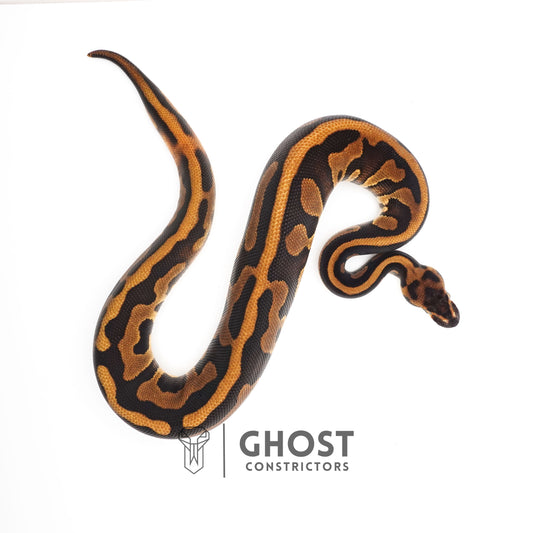Feeding Your Ball Python: Size Guide, Schedule & Tips
Share
Welcome to the Feeding Guide for Your New Ball Python 🐍
Thank you for choosing us as your trusted breeder! Your ball python is a beautiful, healthy animal—and we want to make sure it stays that way. One of the most important parts of ball python care is feeding correctly.
In this guide, you’ll learn:
- How to choose the right feeder size (mice, Norway rats, African soft furs)
- How often to feed your snake
- How to safely thaw and warm up frozen rodents
- Common feeding tips and tricks
Let’s get started.
How Often Should You Feed Your Ball Python?
Feeding frequency depends on the age, size, and metabolism of your snake.
| Snake Age / Size | Feeding Frequency |
|---|---|
| Hatchlings (0–4 months) | Every 5–7 days |
| Juveniles (4 months–1 year) | Every 7–10 days |
| Adults (1+ year) | Every 10–14 days |
⚠️ Always wait 48–72 hours before handling after feeding. This prevents regurgitation.
Choosing the Correct Feeder Size
Your snake’s feeder should be about the same width as the widest part of your ball python’s body. Too large, and the snake might refuse or regurgitate; too small, and it may not be satisfied.
We’ve broken it down by the three most common feeder types:
🐁 Mice
| Mouse Type | Approx. Weight | Best For |
|---|---|---|
| Pinky | 1–3g | Hatchlings |
| Fuzzy | 4–7g | Hatchlings to young juveniles |
| Hopper | 8–12g | Juveniles |
| Adult | 15–20g | Larger juveniles |
| XL Adult | 25–30g | Adults (not ideal long-term) |
Note: Mice are often used for young ball pythons, but adult mice may be too small for adult snakes. Long-term, rats are a better fit for most adult ball pythons.
🐀 Norway Rats (Standard Feeder Rats)
| Rat Type | Approx. Weight | Best For |
|---|---|---|
| Pup | 20–30g | Juveniles |
| Weaned | 30–45g | Juveniles to subadults |
| Small | 50–90g | Subadults to small adults |
| Medium | 90–150g | Average adults |
| Large | 150–250g | Large adults only |
Pro Tip: Rat Pups are ideal for most of the juvenile ball pythons we ship out. Medium rats are ideal for most adult ball pythons. Always match size to your snake’s girth.
🐀 African Soft Fur Rats (ASFs)
ASFs are naturally more enticing to ball pythons and are a good choice if your snake is a picky eater or raised on ASF feeders. They have a higher fat content and a strong scent.
| ASF Size | Approx. Weight | Best For |
|---|---|---|
| Fuzzy | 10–20g | Hatchlings/Juveniles |
| Weaned | 25–40g | Juveniles |
| Small Adult | 40–60g | Subadults |
| Medium | 60–90g | Most adults |
| Large | 90–120g | Large adults |
ASF Notes:
- Ball pythons raised on ASFs may be picky about switching to Norway rats.
- We recommend sticking with the feeder type your snake was already eating when shipped from us. Check your included feeding card or email us for confirmation.
How to Thaw and Warm a Frozen-Thawed Rodent (Step-by-Step)
Feeding frozen-thawed rodents is the safest and most humane option. Here’s how to do it the right way:
Step 1: Thaw
- Place the rodent in a zip-top bag.
- Let it thaw in the fridge overnight OR
- Submerge the bag in warm (not hot) water for 30–60 minutes.
Step 2: Warm
- Right before feeding, place the sealed bag in hot tap water (~100–110°F) for 5–10 minutes to reach body temperature.
- Rodents should be warm to the touch but not hot.
❌ Never microwave a rodent. It can explode and become unsafe to eat.
❌ Never leave thawed rodents out at room temp for more than 2 hours.
How to Offer the Food
- Use long feeding tongs to dangle the rodent by the tail or back legs.
- Gently wiggle it to simulate movement.
- Offer it near the snake’s head in the enclosure (don’t handle during feeding).
Some snakes prefer eating in their enclosure. Others like being placed in a separate feeding tub. Both are fine—go with what works for your individual snake.
Feeding Tips & Troubleshooting
Feeding issues are common with ball pythons and are usually fixable with a few small adjustments.
✅ Try These if Your Ball Python Refuses Food:
- Double-check temps and humidity (see our care guide)
- Feed at night when they’re naturally active
- Switch to ASFs or scented rodents
- Offer prey that’s freshly warmed and dry (pat with paper towel)
- Try braining the rodent (poke the head slightly to release scent)
- Cover the enclosure with a towel to reduce distractions
💡 Ball pythons can go several weeks without eating, especially during breeding season or winter. This is normal in healthy adults as long as they maintain weight.
What If My Snake Was Eating ASFs, But I Can’t Find Them?
If your snake was eating African soft furs, you can attempt a feeder transition to Norway rats by:
- Scenting a rat with ASF bedding
- Warming the rat to a higher temperature than usual
- Offering at night in a dark, quiet space
- Being patient and persistent—it may take 2–3 attempts
You can also continue sourcing ASFs from specialty rodent breeders if your snake is reluctant to switch.
Final Feeding Reminders
- Feed prey the same width as your snake’s thickest point
- Thaw and warm feeders thoroughly
- Do not handle for 48–72 hours after feeding
- Track meals and bowel movements in a journal or app
- If in doubt, contact us for personalized feeding advice
Call to Action: Need Feeders or Feeding Support?
We're here for you long after your purchase.
At Ghost Constrictors, we offer:
✅ Personalized feeding advice for your specific snake
✅ Recommendations for feeder suppliers near you
✅ Ball python feeding support by email or chat
✅ Healthy, ready-to-eat snakes raised on a regular diet
👉 Have questions? Contact us here
👉 Need to reorder frozen rodents or find a trusted source? Shop Feeders
Feeding your ball python doesn’t have to be stressful—we’ve got your back every step of the way.











